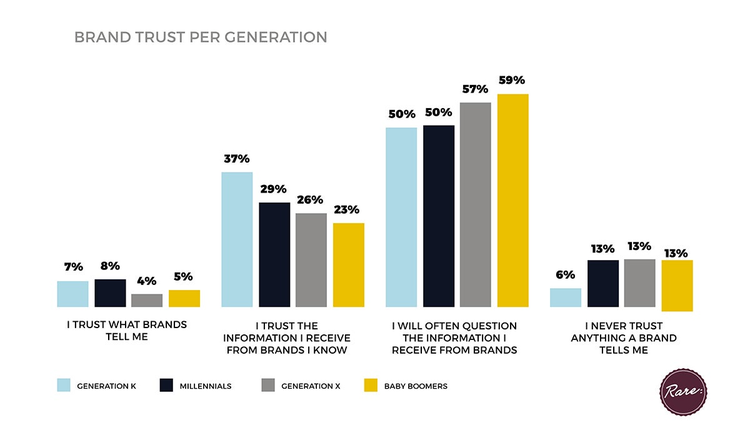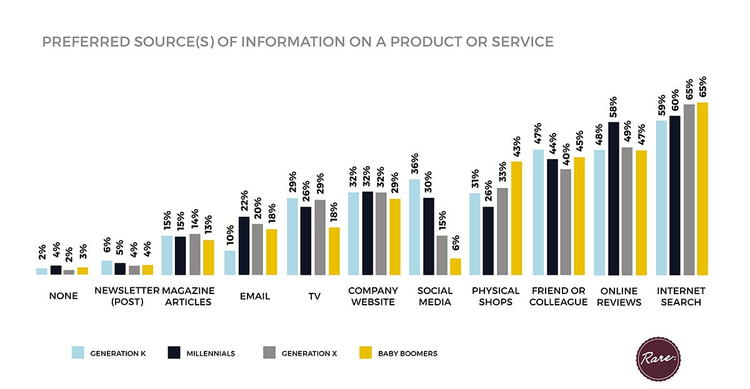‘Trust Me, I’m A Brand’
Consumers have been misled by various brands on numerous occasions and now treat corporate communications with justified suspicion. What can marketers do to maintain their trust?

Back in the late ’90s when Tesco launched Clubcard and was followed closely by Nectar, the trend to fill your wallet with as much plastic as possible really kicked in. These schemes were very much of the time, and have laid the foundation for many out-of-the-box copycat schemes since.
However, an article in This is Money last year highlighted that there are around £4.5 billion worth of unused loyalty points on the U.K. high street alone, which begs the questions: Are customers becoming more apathetic towards marketing departments and their ways of stimulating “loyalty”? If so, what is going wrong with “loyalty” as we see it?
The Trust-To-Loyalty Ratio
Perhaps, the marketing industry hasn’t really understood what true loyalty means. To investigate this further, our survey of over 1,000 people in the U.K. asked what brand loyalty means to them.
Our findings showed that loyalty is not simply about economic rewards. From a customer point of view, the most popular way—for one in five respondents (20%)—to describe brand loyalty was in terms of “trust.” And when asked what drives them to be loyal to brands, customers said likeability (86%), quality (83%), and trust (83%).

Likeability is driven by the personality of the brand (the brand image) and the extent to which this resonates or creates a positive emotional reaction within the individual. This is our hedonic motivation for interacting with a brand, confirming that loyalty is largely driven by the pleasure we get from the relationship and not the functional or utilitarian benefits.
Day by day, brand communications are becoming increasingly automated through the use of programmatic advertising and bots replacing humans in live customer service chat.
But how does this impact brand trust? Our research showed only 5% of people trust what brands tell them. Interestingly, there are indications that Generation K are the most trusting of the information they receive from brands they know. (As shown in the chart below.)

Who Can You Trust?
So why is trust low? Loyalty and trust are complicated human conditions, expressed in many different ways. Yet it shouldn’t be a surprise that trust is low. In recent years, there have been numerous examples of consumers being misled by brands in sectors from food to beauty to automotive; the technology sector, too, with its in-built product obsolescence. Prior to the internet age, brands could get away with these sorts of things easily, but now—luckily for customers—it’s not as easy.
Customers’ response to this is a reliance on peer reviews and own search when deciding what to buy. According to our survey, all generations now rely completely on customer reviews and internet research: around six in 10 claim they use search when seeking information about brands; and five in 10 use customer reviews.

The research fully endorses Google’s Zero Moment of Truth principles, illustrating the role a bad review could have on acquiring new customers and retaining your own. No matter how good advertising, digital apps, or loyalty schemes are, a negative review might be enough to sway the decision.
Consistency Key For Brand Trust
As we’ve seen, brand trust is a vital component for stimulating brand loyalty but can easily be tarnished by the experiences of others, as well as ourselves. So what can brands do to ensure trust is maintained?
Anecdotally from our research, the issue of consistency came out in the verbatim, indicating that the transformation to multichannel delivery is still a tricky area for brands. As one respondent put it: “Why should the hoover cost me £219 online and £299 in store for next-day delivery?”
At a time when comms are slick and automated, there is a need to get back to authentic experiences that make a difference to people, and it shouldn’t be difficult for brands to understand what creates trust for their customers. All you have to do is ask.